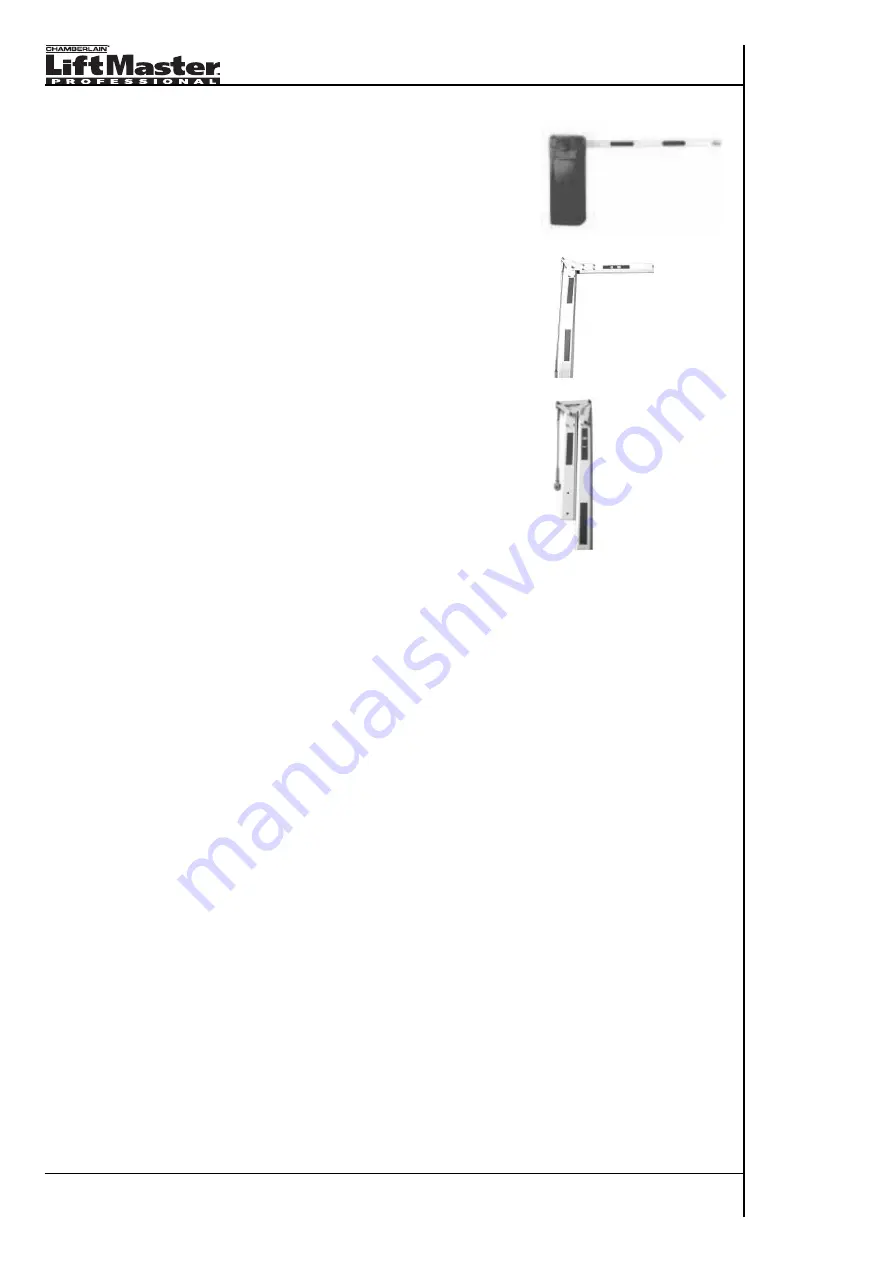
13/40
Notes
5.3
Operation of barrier (straight pole)
Barriers with straight barrier posts are available in different
lengths. The straight pole moves from horizontal to the complete
vertical position. Short barrier posts can be opened very quickly (1
second), long posts must be openend more slowly (3 / 6 seconds)
in order to ensure lasting and safe operation of unit.
5.4
Operation of barrier (90° articulated pole)
The 90° articulated pole is used when there is only limited height
available or an ensuing height restriction is indicated at the barrier
(limited to car entry only). These types of barriers open in 3 – 6
seconds. For dimensions see Technical Data.
5.5
Operation of barrier (180° folding pole)
The 180° folding pole operates similarly to the 90° version. The
difference is that the pole is swung completely out of the way. This
leads to a height saving which can be used otherwise. This type of
barrier requires at least 3 seconds to open. For dimensions see
Technical Data.
5.6
Operation of barrier (lattice/fence)
(in preparation) The lattice barrier is used in combination with the straight barrier pole. The lattice
moves with the barrier pole and visually keeps pedestrians from passing through the barrier resp.
redirects to a pedestrian path. These barriers work slower due to additional weight – normally 6
seconds.
5.7
Operation of motor
The rotary motion of the motor is transferred to the axle via a buffer lever. The characteristic
mechanism lets the barrier open slowly at first, then it accelerates it and finally slows it down again
before reaching the end position. This prevents the barrier pole from slamming and helps increase
the life span. The special mechanics results in the barrier being totally irreversible and for the
mechanics to break down first. This renders the barrier extremely durable and in case of
vandalism or the barrier pole being damaged – only the barrier pole has to be replaced.
5.8
Operation of spring (balancing spring)
There are 2 resp 3 springs (depending on model) under the casing’s hood. The main spring and 2
buffer springs. The main spring is responsible for the balancing of the barrier pole and the pre-
stressing is adjusted according to barrier pole length. The buffer spring or emergency spring
guarantees a smooth travel and serves for added safety in case the main spring should break.
5.9
Operation of limit switches
End stops are attached to the intermediate lever as well as the limit levers, which have been
preset ex works to the 90° movement. A contact-free limit switch shuts the control off. After the
preset time the control shuts off the motor. An exact setting can ensure the shortest possible motor
run time, preventing the motor from heating up unnecessarily when travelling towards the end
stops and shutting down in this position after some time.






























